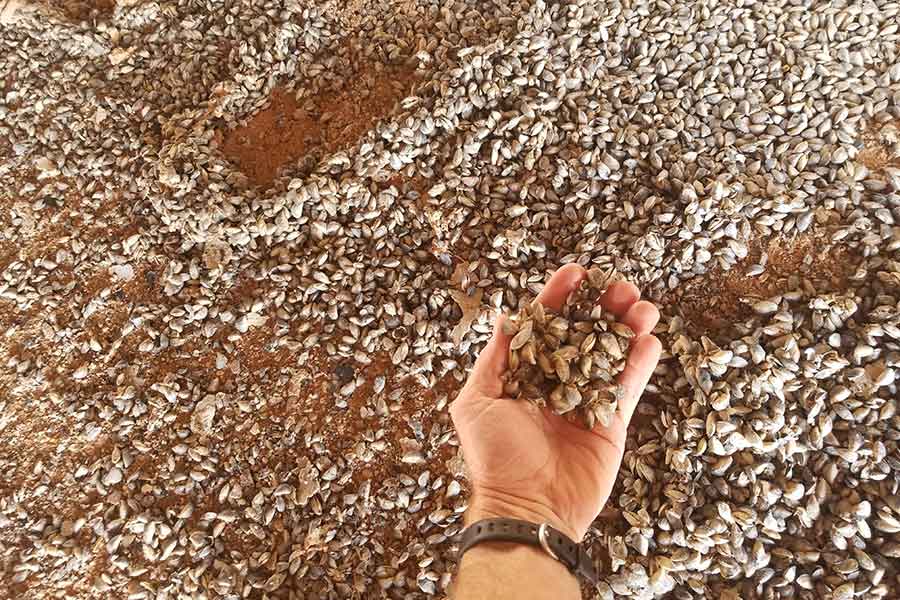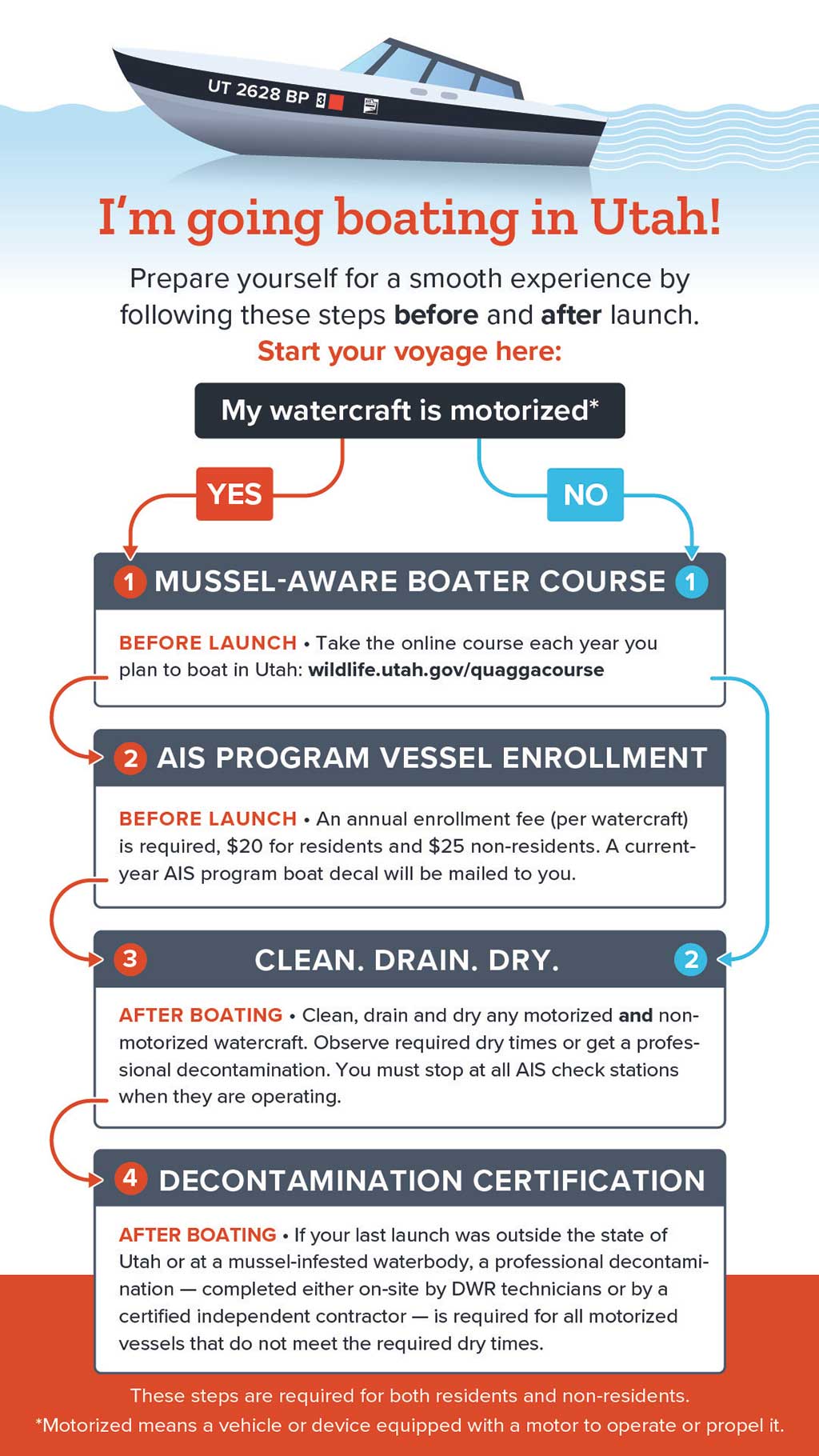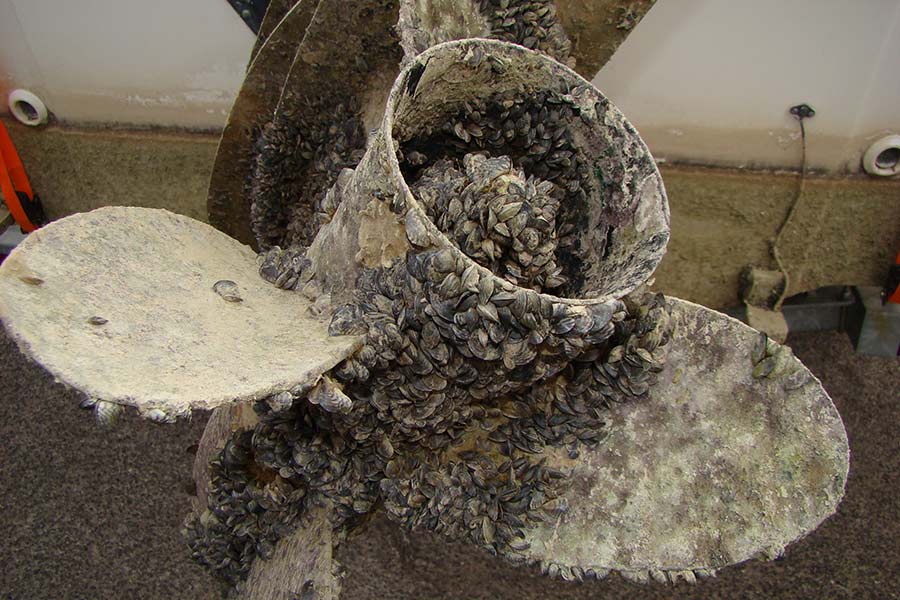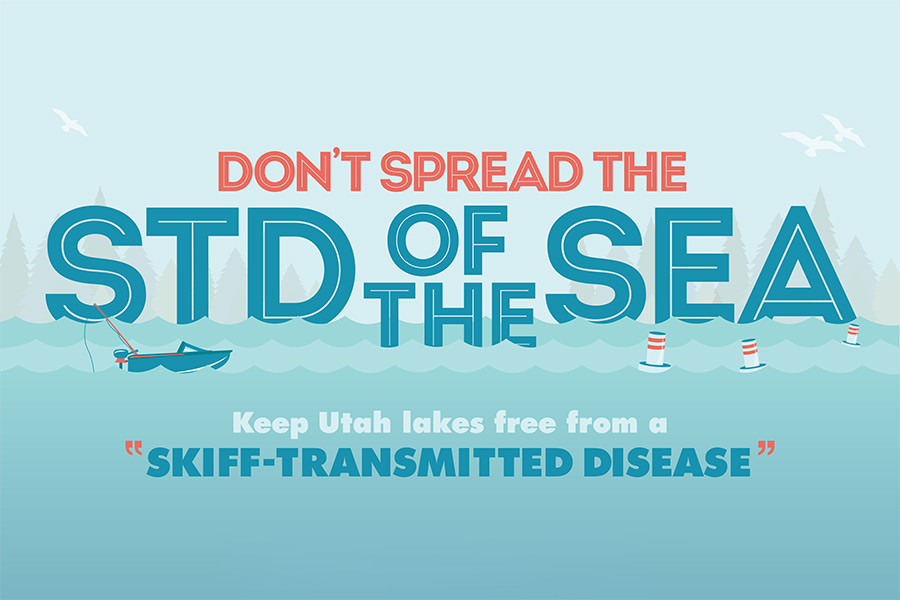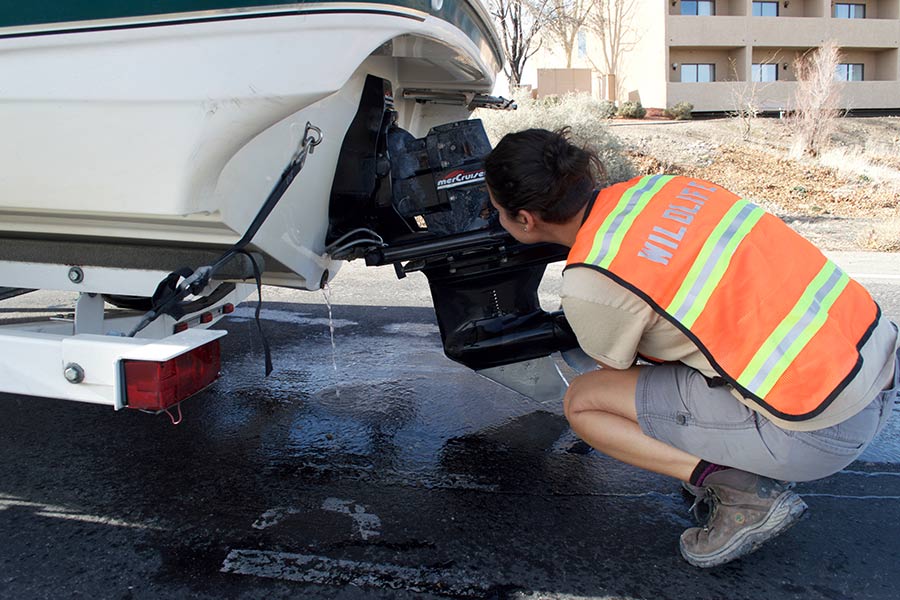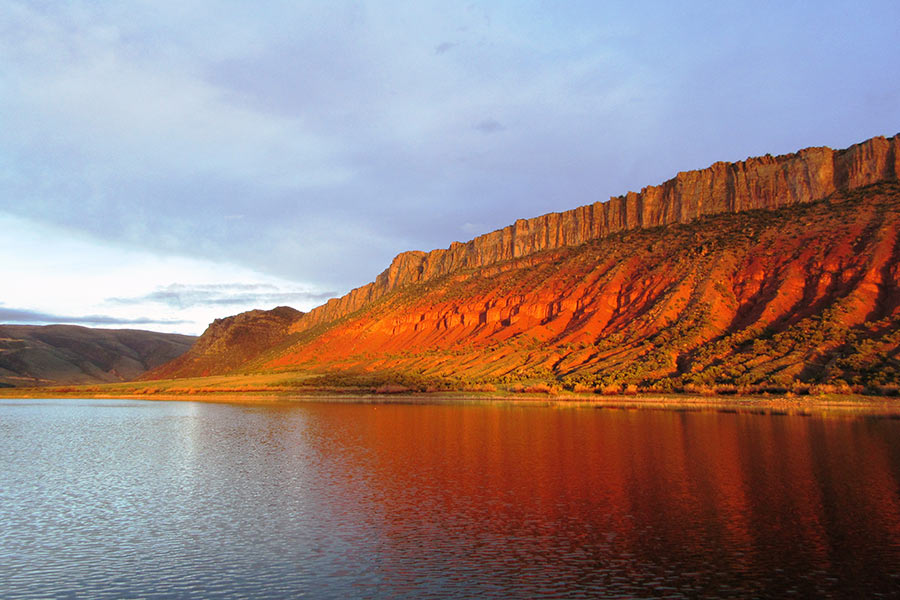Aquatic Invasive Species
Clean, drain and dry your boat to avoid spreading the "STD of the Sea"
Utah's scenic waters provide recreational enjoyment for boaters year-round. Before launching your vessel, make sure to get familiar with the rules and requirements of boating in Utah, and help stop the spread of invasive quagga mussels.
Requirements before you launch in Utah
Remember: If it floats, it's a boat!
All boaters — whether you are a Utah resident or nonresident — must take the annual Utah mussel-aware boater course and have proof of course completion in your launch vehicle (a printed copy or downloaded to your DWR Hunting and Fishing mobile app). This includes users of all kinds of watercraft, including motorized boats and human-powered kayaks, canoes, paddleboards, etc.
Boaters with motorized watercraft must also enroll in the Utah AIS Program and pay an annual fee — $20 for Utah residents and $25 for nonresidents — through the Utah Division of Wildlife Resources. You will receive a current-year AIS decal for your vessel. (The Utah Division of Motor Vehicles no longer accepts payment for AIS vessel enrollment for Utah boaters as part of your DMV registration.)
Boaters are required to stop at all operating AIS inspection stations.
Decontamination requirements
If you are arriving from another state/country or have been at a mussel-infested waterbody (such as Lake Powell) in the last 30 days, you have two options for decontamination prior to launch at any Utah waterbody.
- Option 1: Complete the full required clean, drain and dry process to eliminate all life stages of quagga mussels.
- Option 2: Obtain a professional decontamination.
For more information about rules and requirements for boaters in Utah, see the STD of the Sea website.
Why quagga mussels are bad
- They plug water lines, even lines that are large in diameter.
- If they get into water delivery systems in Utah, it will cost millions of dollars annually to remove them and keep the pipes free, which can result in higher utility bills.
- They remove plankton from the water, which hurts fish species in Utah.
- Mussels get into your boat's engine cooling system. Once they do, they'll foul the system and damage the engine.
- When mussels die in large numbers, they stink and the sharp shells of dead mussels also cut your feet as you walk along the beaches.
Do your part to stop the spread
While the presence of quagga and zebra mussels in Utah is currently limited to Lake Powell, these invasive species threaten all of Utah's waterbodies. Newly hatched mussels are microscopic and can attach to your watercraft in as little as a day! They can easily be transferred to other waters without boat owners even knowing that these tiny but incredibly destructive mussels have hitched a ride.
Do your part to avoid spreading the "skiff-transmitted disease" (STD) of the sea by cleaning, draining and drying.
For more information about the process of cleaning, draining and drying your watercraft, see STDoftheSea.utah.gov.
What to expect when leaving Lake Powell
DWR technicians are working on the ramps at Lake Powell most daylight hours to assist boaters in complying with state law and to ensure that aquatic invasive species are not transported out of the reservoir. Technicians help boaters drain water from their vessels and inspect for attached mussels.
When you leave Lake Powell, make sure your watercraft (e.g., boat, kayak, canoe, paddleboard) is clean of mud, plants and animals.
Remove all drain plugs and sea strainers, if applicable, on the launch ramp and leave them out. Pump all water out of ballast tanks and drain water from the engine before proceeding up the ramp.
Inspection and decontamination
You must stop at all open inspection stations.
You are required to stop for watercraft inspection at the inspection station if it is open. A technician will assist you and provide you with an inspection receipt and apply a seal to your boat/trailer indicating that the boat has received an official inspection.
If the inspection station is not open, it is your legal responsibility to clean and drain your boat before leaving Lake Powell, and to transport your boat with all drain plugs removed, including the sea strainer. Draining of ballast tanks can best be accomplished by activating the ballast pumps on both an incline, and later on flat ground. Likewise, draining of engines should be performed on both an incline and flat ground.
A professional hot water decontamination may be available upon a request, depending on staffing and the amount of boat traffic the station is experiencing.
After boating at Lake Powell, you have two options for decontamination prior to your next launch at any Utah waterbody:
- Option 1: Complete the full required clean, drain and dry process to eliminate all life stages of quagga mussels.
- Option 2: Obtain a professional decontamination (on site or at a later time).
Dip tanks for quick decontamination are available at some Utah waterbodies.
Inspections statewide
There are over 40 inspection/decontamination stations located at various waterbodies and along highways throughout Utah. Find a station near you.
Prevention
The DWR — together with its partners at federal, state, and local levels — works diligently to protect Utah's waters from invasive quagga and zebra mussels. This work involves the development of rapid response plans that would guide management decisions and actions upon the initial detection of invasive mussels in a Utah waterbody.
The Flaming Gorge Reservoir Rapid Response Plan outlines those steps in the event that there is a detection at Flaming Gorge Reservoir.
Proposed management actions of the Flaming Gorge Rapid Response Plan include:
- Complete access restriction for all watercraft at the reservoir for a period of 24–72 hours to allow for mussel verification.
- The prohibition of shoreline launching around the reservoir and restriction of all public launching of watercraft to six ramps during the first year after mussel detection.
- Implementation of exit inspections of departing watercraft at those six launch ramps during daylight hours from March through October.
Read the most recent AIS program annual report.
Learn more
- Visit the STDoftheSea.utah.gov website for regulations, requirements and frequently asked questions about quagga mussels.
- View Utah AIS inspection statistics.
- See seasonal AIS technician job openings.
- See the full list of Utah administrative rules for aquatic invasive species.
- DWR WILD podcast: Fighting the STD of the Sea.
- DWR inspection dive at Deer Creek Reservoir.
- See the Utah State University Quagga Mussel (Dreissena bugensis) and Zebra Mussel (Dreissena polymorpha) Fact Sheet for more information about these aquatic invaders.


